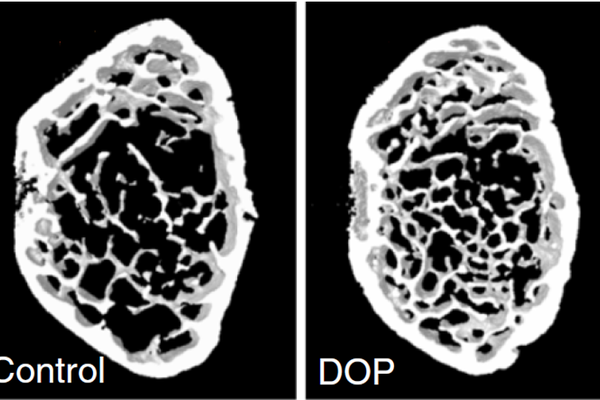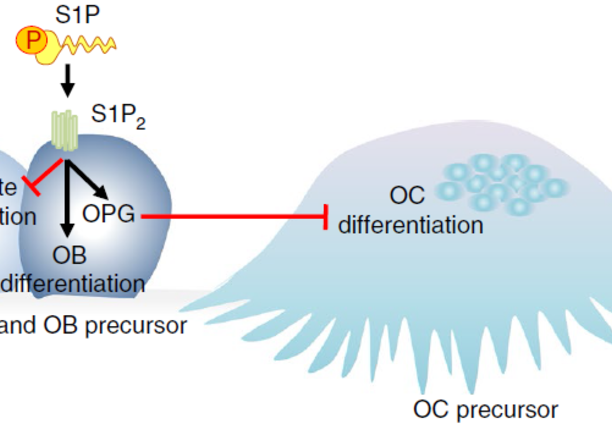OsteoProtect - Treatment of osteoporosis by inhibitors of sphingosine-1phosphatase (S1P)-lyase
Ref.-Nr. 4955
Keywords: Osteoporosis, inhibitors of sphingosine-1-phophatase (S1P)-lyase, novel therapy for bone loss
There are currently 200 million people suffering from osteoporosis worldwide. Low bone mass and deteriorating bone quality lead to an increased risk of fractures, high morbidity and increased mortality. According to the International Osteoporosis Foundation, one in three women and one in five men over the age of 50 will experience osteoporotic fractures. Current pharmacological therapy consists of antiresorptive agents, none of which stimulates new bone formation. Bone tissue undergoes dynamical remodeling by the coordinated action of bonedegrading osteoclasts and bone-forming osteoblasts. The inventors showed that S1P inhibited osteoclast function, but most importantly, stimulated osteoblasts to produce new bone. Thus, a sufficient S1P-concentration is fundamental for an osteoanabolic fine-tuning of the skelettal system. Furthermore they showed that high S1P counteracts obesity by reducing adipose tissue mass. According to the invention, in patients suffering from osteoporosis, bone formation may be facilitated (and obesity reduced) by administering inhibitors of the S1P-lyase (the key enzyme degrading S1P). An exemplary S1P-lyase inhibitor tested by the inventors is the compound 4deoxypyridoxin (DOP). The compound showed clear therapeutic potential in mouse models of genetic and hormonal (estrogen deficiency) osteoporosis. Another compound might be LX2931. S1P blood concentration was also an indicator of bone health in a study with over 4000 human individuals.
Vorteile
- Novel approach for treating reduced bone density/stability
- Specific inhibitors identified
- In vivo data available
Kommerzielle Anwendung
The invention is offered for licensing.
Aktueller Stand
In vivo data are available (see publication below). A patent application has been filed.
Relevante Veröffentlichungen
Weske, S. et al. (2018): Targeting sphingosine-1-phosphate lyase as an anabolic therapy for bone loss. Nat. Med. 24(5): 667-678.
—
Eine Erfindung der Uni Duisburg-Essen.




